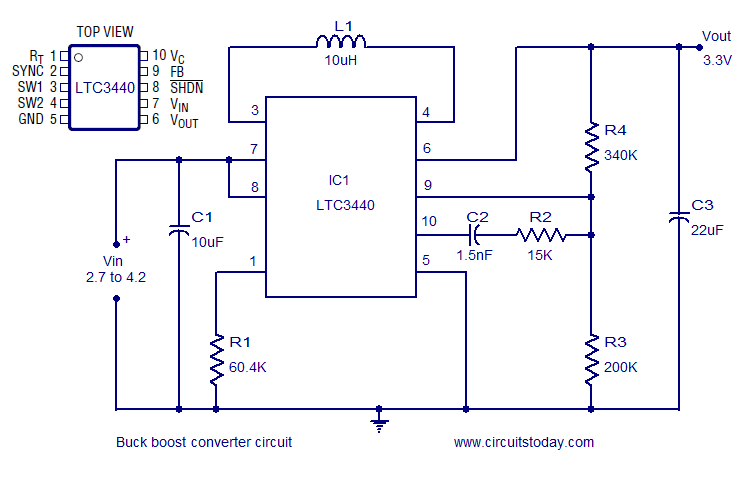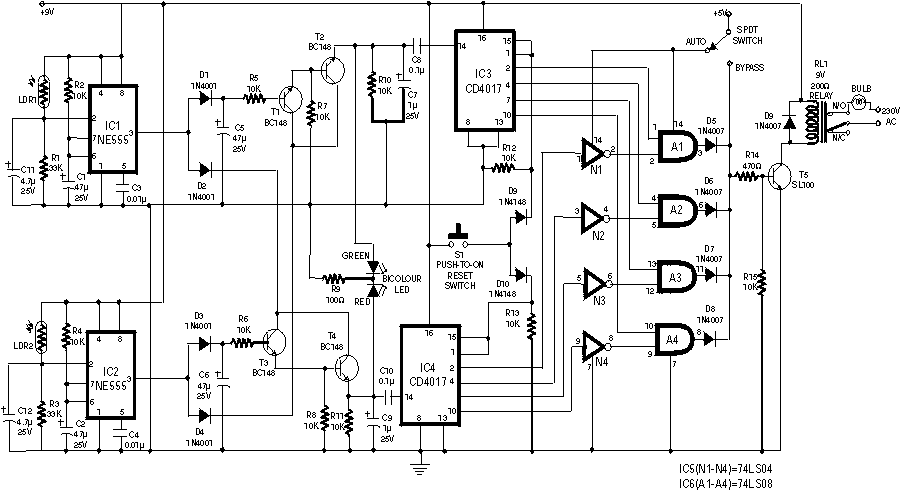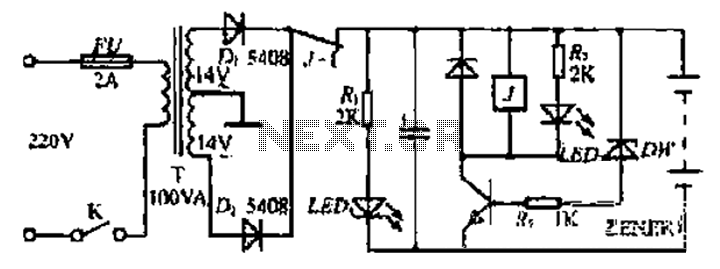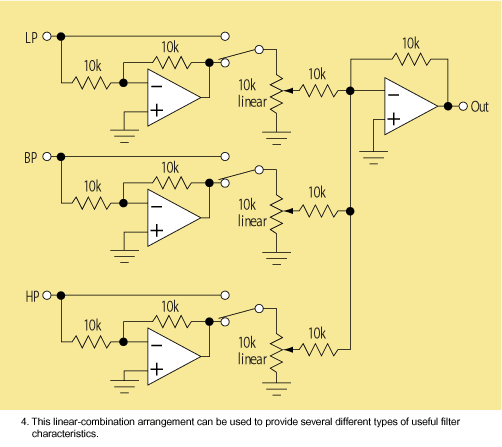
Audio oscillator circuit based on ICL8038
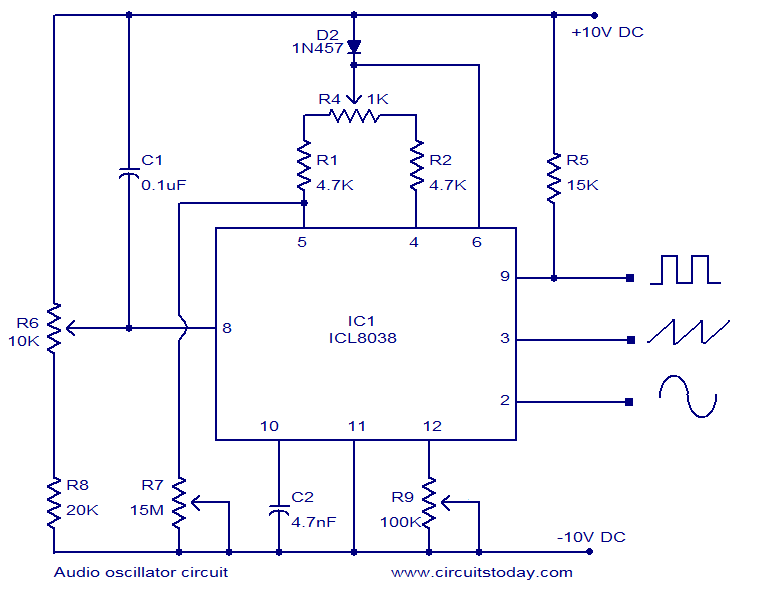
ICL8038-based audio oscillator circuit. Simultaneous sine, triangle, and square waveforms. Dual supply operation. Covers the full audio frequency range.
The ICL8038 is a precision waveform generator integrated circuit that can produce sine, triangle, and square waveforms simultaneously. This versatility makes it suitable for a variety of audio applications, including signal generation for testing audio equipment or creating sound effects in synthesizers.
The circuit typically operates with dual supply voltages, allowing for a wide range of output amplitudes. The ICL8038 can generate waveforms across the full audio frequency spectrum, typically from 0.1 Hz to 100 kHz, making it ideal for musical applications.
To construct an ICL8038-based audio oscillator circuit, the following components are generally required:
- ICL8038 integrated circuit
- Resistors and capacitors for setting the frequency and waveform characteristics
- Dual power supply (often ±15V) to provide the necessary operating voltage range
- Output coupling capacitors to block DC components from the waveform outputs
The circuit's configuration involves connecting the appropriate resistors and capacitors to the ICL8038's pins, which determine the frequency and shape of the output waveforms. The sine, triangle, and square wave outputs can be taken from designated output pins on the IC, allowing for simultaneous use of all three waveforms.
In applications where precise frequency control is necessary, additional components such as variable resistors (potentiometers) may be included to allow for fine-tuning of the output frequency. Furthermore, the circuit can be enhanced with additional filtering stages to improve the quality of the sine wave output, reducing harmonic distortion.
Overall, the ICL8038-based audio oscillator circuit is a robust solution for generating high-quality audio waveforms, making it a valuable tool for engineers and hobbyists in the field of audio electronics.ICL8038 based audio oscillator circuit. Simultaneous sine, triangle and square wave forms. Dual supply operation. Cover full audio frequency range.. 🔗 External reference
The ICL8038 is a precision waveform generator integrated circuit that can produce sine, triangle, and square waveforms simultaneously. This versatility makes it suitable for a variety of audio applications, including signal generation for testing audio equipment or creating sound effects in synthesizers.
The circuit typically operates with dual supply voltages, allowing for a wide range of output amplitudes. The ICL8038 can generate waveforms across the full audio frequency spectrum, typically from 0.1 Hz to 100 kHz, making it ideal for musical applications.
To construct an ICL8038-based audio oscillator circuit, the following components are generally required:
- ICL8038 integrated circuit
- Resistors and capacitors for setting the frequency and waveform characteristics
- Dual power supply (often ±15V) to provide the necessary operating voltage range
- Output coupling capacitors to block DC components from the waveform outputs
The circuit's configuration involves connecting the appropriate resistors and capacitors to the ICL8038's pins, which determine the frequency and shape of the output waveforms. The sine, triangle, and square wave outputs can be taken from designated output pins on the IC, allowing for simultaneous use of all three waveforms.
In applications where precise frequency control is necessary, additional components such as variable resistors (potentiometers) may be included to allow for fine-tuning of the output frequency. Furthermore, the circuit can be enhanced with additional filtering stages to improve the quality of the sine wave output, reducing harmonic distortion.
Overall, the ICL8038-based audio oscillator circuit is a robust solution for generating high-quality audio waveforms, making it a valuable tool for engineers and hobbyists in the field of audio electronics.ICL8038 based audio oscillator circuit. Simultaneous sine, triangle and square wave forms. Dual supply operation. Cover full audio frequency range.. 🔗 External reference
